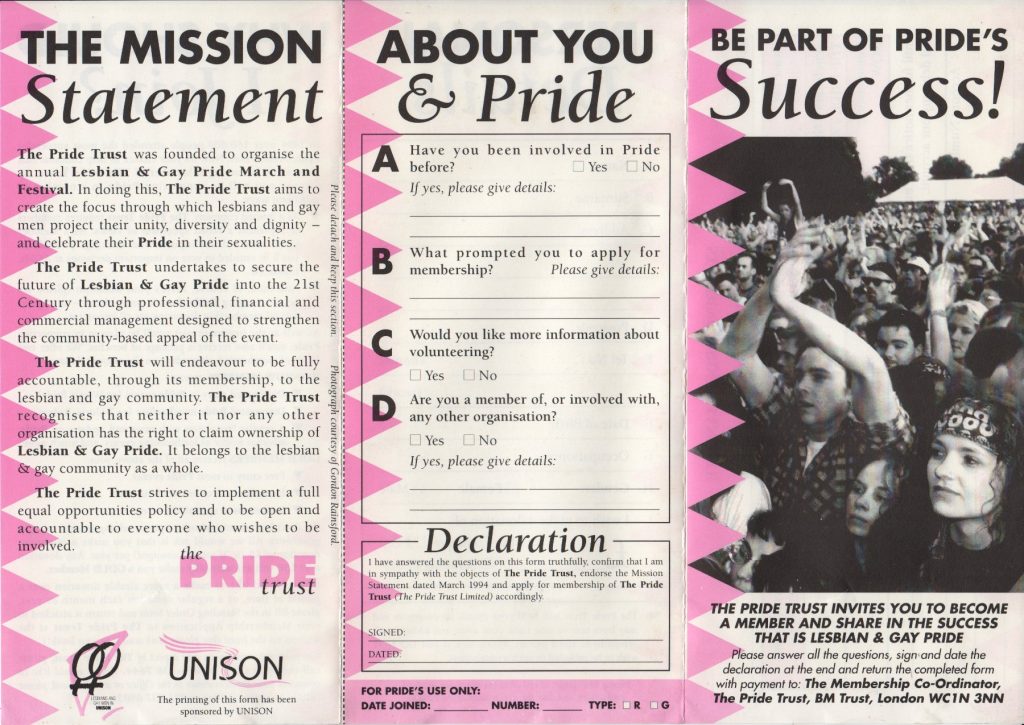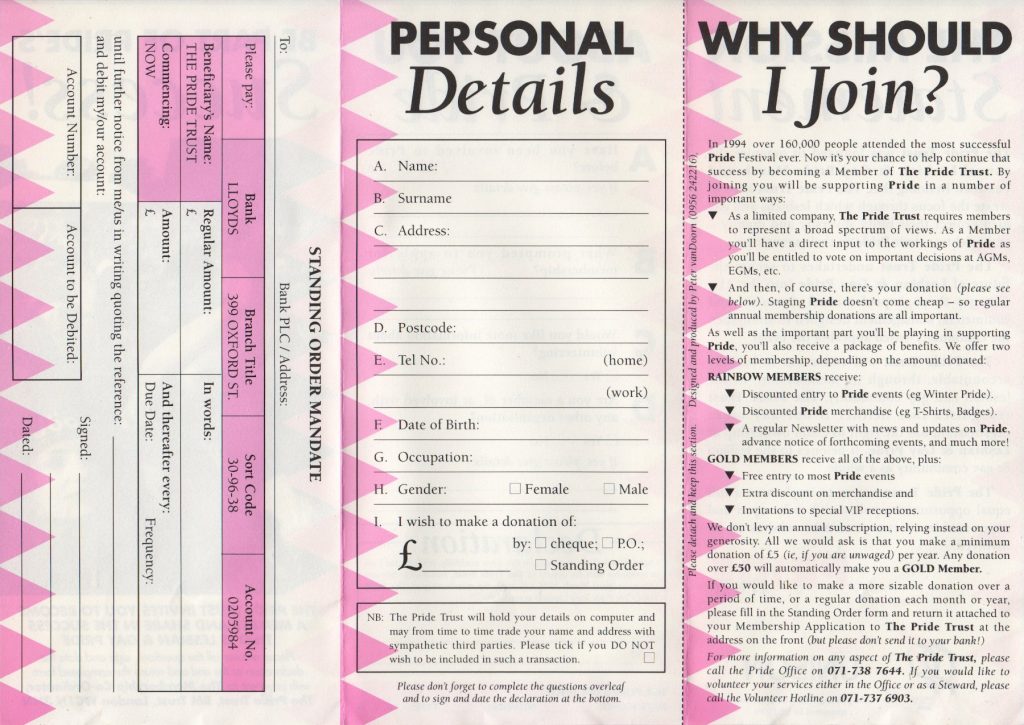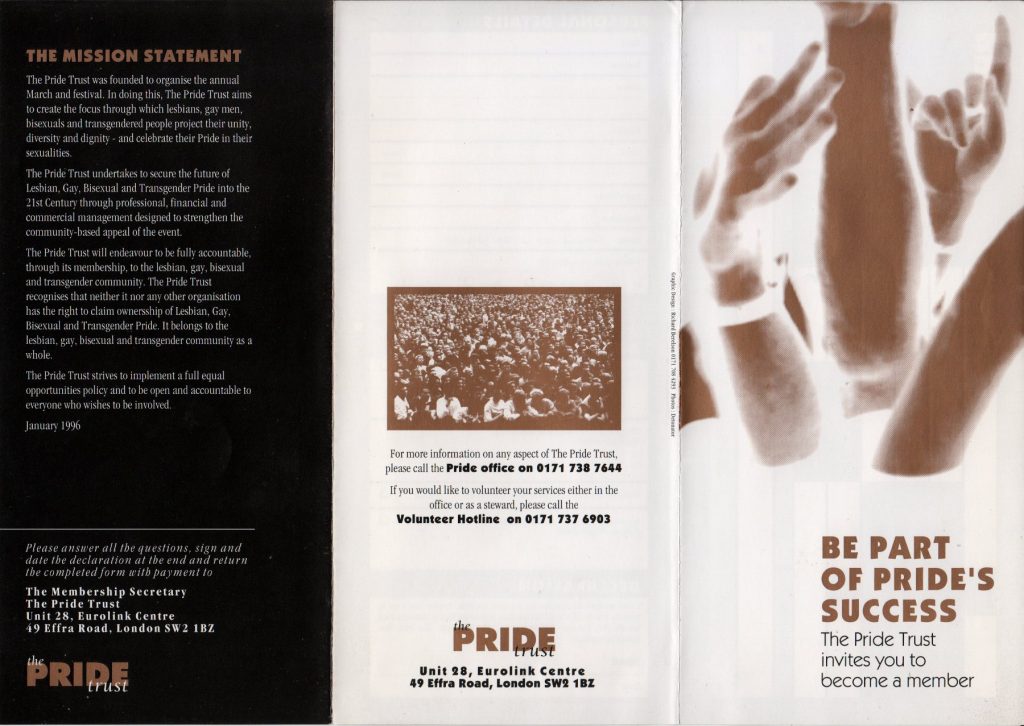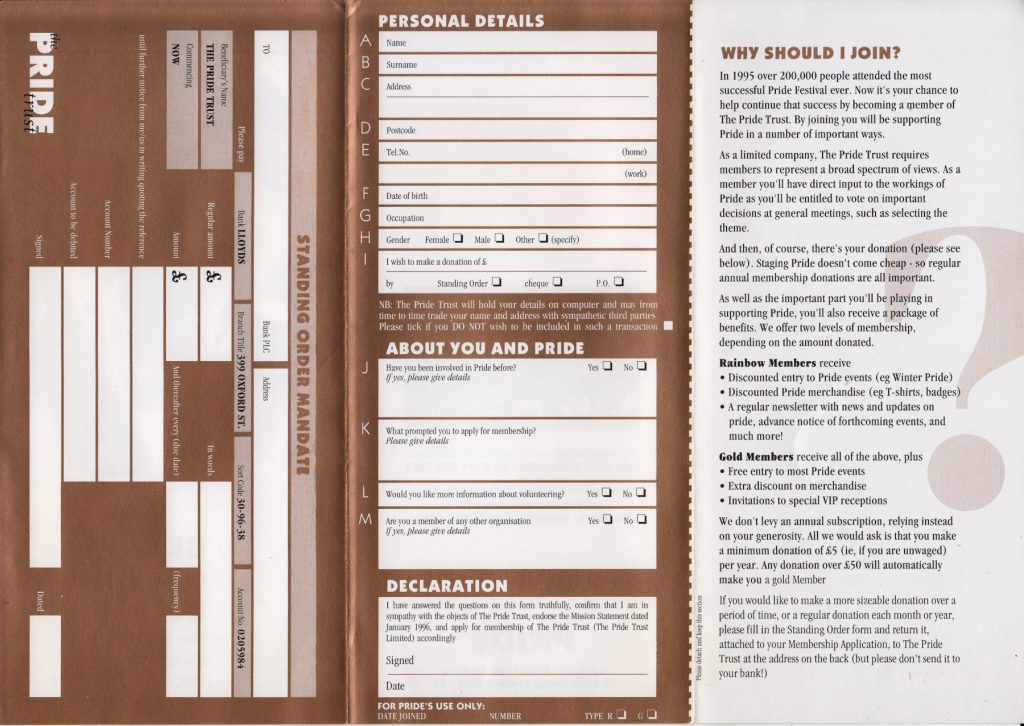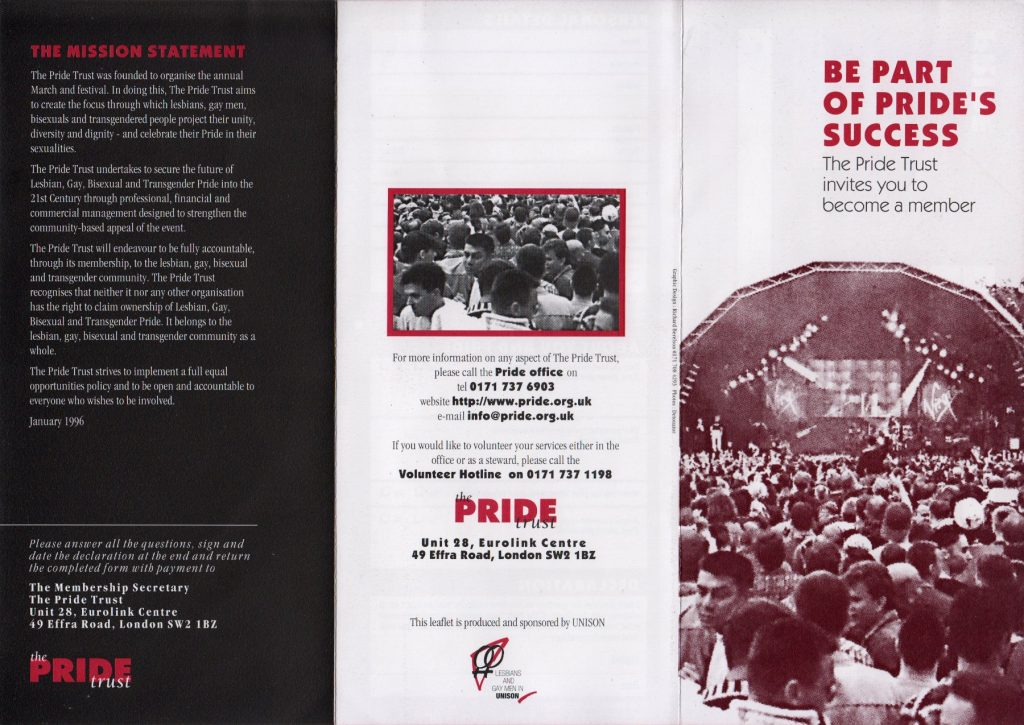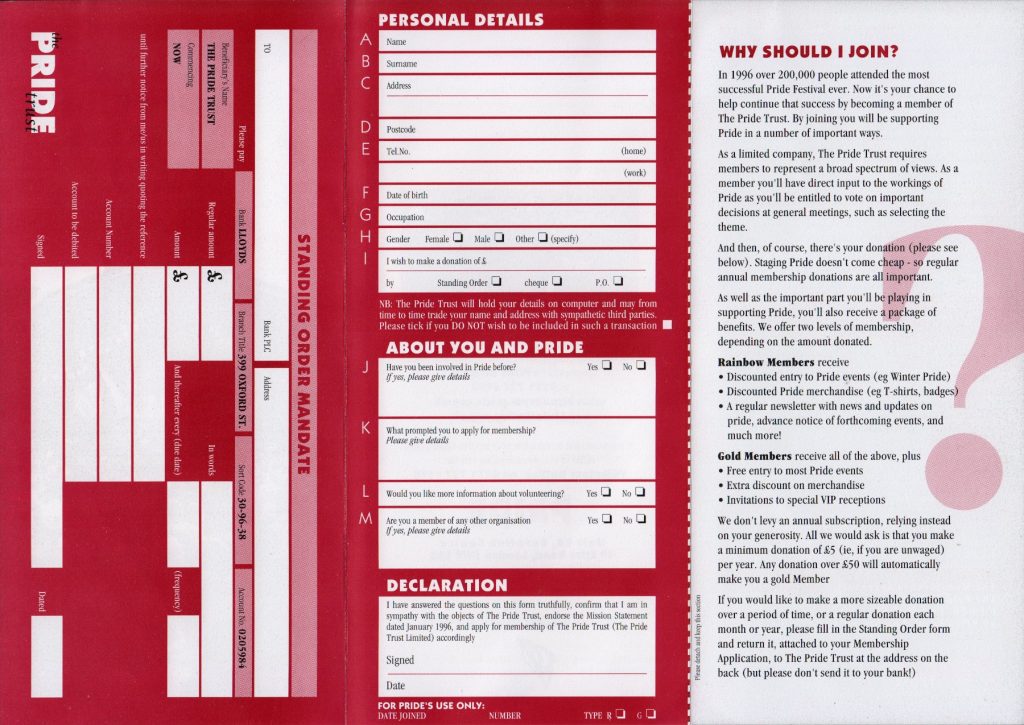The much-missed Pride Trust was a company limited by guarantee: rather than having any share capital, members promised to pay something like a pound if it was wound up.
Here's the version of the form I filled after the September 1995 visit of the Pride Trust's Adam Jeanes and Tom Brooks to that year's BiCon to join:
Be part of Pride's Success!
The Pride Trust invites you to become a member and share in the success that is Lesbian & Gay Pride
As part of joining, applicants had to endorse..
The Mission Statement
The Pride Trust was founded to organise the annual Lesbian & Gay Pride March and Festival. In doing this, The Pride Trust aims to create the focus through which lesbians and gay men project their unity, diversity and dignity – and celebrate their Pride in their sexualities.
The Pride Trust undertakes to secure the future of Lesbian & Gay Pride into the 21st Century through professional, financial and commercial management designed to strengthen the community-based appeal of the event.
The Pride Trust will endeavour to be fully accountable, through its membership, to the the lesbian and gay community. The Pride Trust recognises that neither it nor any other organisation has the right to claim ownership of Lesbian & Gay Pride. It belongs to the lesbian & gay community as a whole.
The Pride Trust strives to implement a full equal opportunities policy and to be open and accountable to everyone who wishes to be involved.
The form later said that dated to March 1994.
Why Should I Join?
In 1994 over 160,000 people attended the most successful Pride Festival ever. Now it's your chance to help continue that success by becoming a Member of The Pride Trust. ..
Ordinary ("Rainbow") members had discounted entry to things like Winter Pride and discounts on merch like t-shirts. Give over £50, and you would be a "Gold" member with free entry, more discounts on merch, and "invitations to special VIP receptions".
As part of the form, applicants were asked if their gender was female or male.
At some point after the vote in the second week of January 1996 to change the name of the event to Lesbian, Gay, Bisexual and Transgender Pride, the Pride Trust produced a new membership leaflet:
Be part of Pride's Success!
The Pride Trust invites you to become a member
The Mission Statement
The Pride Trust was founded to organise the annual March and Festival. In doing this, The Pride Trust aims to create the focus through which lesbians, gay men, bisexuals and transgendered people project their unity, diversity and dignity – and celebrate their Pride in their sexualities.
The Pride Trust undertakes to secure the future of Lesbian, Gay, Bisexual and Transgender Pride into the 21st Century through professional, financial and commercial management designed to strengthen the community-based appeal of the event.
The Pride Trust will endeavour to be fully accountable, through its membership, to the the lesbian, gay, bisexual and transgender community. The Pride Trust recognises that neither it nor any other organisation has the right to claim ownership of Lesbian, Gay, Bisexual and Transgender Pride. It belongs to the lesbian, gay, bisexual and transgender community as a whole
The Pride Trust strives to implement a full equal opportunities policy and to be open and accountable to everyone who wishes to be involved.
January 1996
Why Should I Join?
In 1995 over 200,000 people attended the most successful Pride Festival ever. Now it's your chance to help continue that success by becoming a Member of The Pride Trust ..
As well as the other changes, applicants were now asked if their gender was female, male or 'other', and asked to say more in the latter case.
The next year, the design had changed, but apart from boasting about the size of the 1996 event rather than the 1995 one and adding The Pride Trust's website and email address, the actual content was almost identical:
I should probably have made this a 'spot the difference' competition, but note that the first and third leaflets were produced and sponsored by Unison's Lesbian and Gay campaign. There'll be more on what happened to that campaign later, but at that point, they really meant 'lesbian and gay men only', so it's nice to see them paying for some LGBT content at the end… but very noticeable that their name isn't on the 1996 version.
